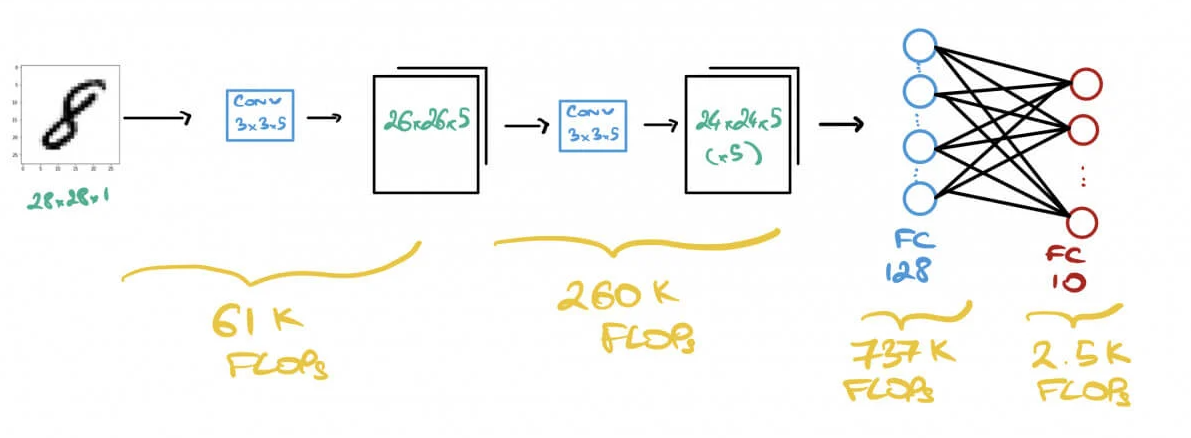FLOPs and MACs in deep learning
Last updated on:5 months ago
FLOPs and MAcs are used for measuring the computer performance.

FLOPs
In computing, floating point operations per second (FLOPS, flops or flop/s) is a measure of computer performance, useful in fields of scientific computations that require floating-point calculations. For such cases it is a more accurate measure than measuring instructions per second.
FLOPs = Floating point operations
For CNN kernels:
$$\text{FLOPs} = 2HW(C_{\text{in}} K^2 + 1)C_{\text{out}}$$
For FC layers:
$$\text{FLOPs} = (2I - 1)O$$
Most of modern hardware architectures uses FMA instructions for operations with tensors.
FMA computes $a*x + b$ as one operation.
MACs = Multiply–accumulate operations
Roughly, GMACs $\approx$ 0.5 * GFLOPs
Others
FLOPs is abbreviation of floating operations which includes mul / add / div … etc.
MACs stands for multiply–accumulate operation that performs a <- a + (b x c).
As shown in the text, one MACs has one mul and one add. That is why in many places FLOPs is nearly two times as MACs.
However, the application in real world is far more complex. Let’s consider a matrix multiplication example.A is an matrix of dimension mxn and B is an vector of nx1.
for i in range(m):
for j in range(n):
C[i][j] += A[i][j] * B[j] # one mul-add
```
It would be `mn` `MACs` and `2mn` `FLOPs`. But such implementation is slow and parallelization is necessary to run faster
```python
for i in range(m):
parallelfor j in range(n):
d[j] = A[i][j] * B[j] # one mul
C[i][j] = sum(d) # n addsThen the number of MACs is no longer mn .
When comparing MACs /FLOPs, we want the number to be implementation-agnostic and as general as possible. Therefore in THOP, we only consider the number of multiplications and ignore all other operations.
PS: The FLOPs is approximated by multiplying two.
Reference
本博客所有文章除特别声明外,均采用 CC BY-SA 4.0 协议 ,转载请注明出处!